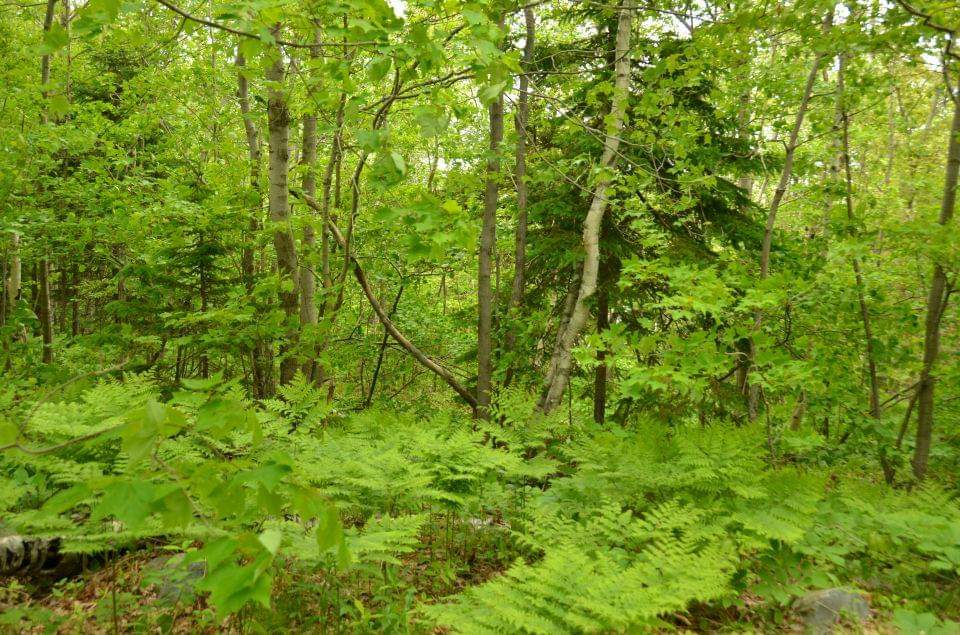****CNS Media Release
Province Announces New Protected Areas, Funding to Protect More Land
—————————————————————–
NOTE: A list of newly designated nature reserves and expanded wilderness areas follows this release.
—————————————————————–
The Province is investing an additional $20 million to help protect more of Nova Scotia’s land and water and designating another 9,300 hectares of Crown land for the benefit of Nova Scotians and the environment.
Environment and Climate Change Minister Timothy Halman made the announcements today, December 12, in Middle Sackville near the newly designated Sackville River Wilderness Area. It covers about 800 hectares of mature forests, wetlands, lakes and waterways. This protected area will help conserve the Sackville River, the Pockwock watershed, which provides communities with drinking water, and recreation areas.
The additional funding will go to the Nova Scotia Crown Share Land Legacy Trust, which helps private land conservation organizations with the cost of acquiring and protecting private land. The work of these organizations is critical to help Nova Scotia reach its 2030 land protection goal.
“Today’s announcement takes us one step forward in our government’s work to protect 20 per cent of our land and water by 2030,” said Minister Halman. “Government cannot achieve this goal alone, and there is still lots of work ahead of us. The funding announced today will help our land conservation partners continue their important work and leadership. Together we will help ensure a sustainable and healthy future for our province, our people and our economy.”
Minister Halman also announced the creation of six new nature reserves and the expansion of seven existing wilderness areas. The newly protected areas announced today bring the total amount of land and fresh water protected in Nova Scotia to over 13 per cent.
Minister Halman is attending the COP15 biodiversity conference in Montreal from Tuesday, December 13, to Friday, December 16. He will meet with government officials, Indigenous leaders and representatives from organizations from across Canada and around the world to discuss how to advance shared goals and action plans to protect more land and water, halt and reverse biodiversity loss and respond to climate change.
Quotes:
“In addition to all that we enjoy about nature, protecting more land in Nova Scotia is critically important for our sustainable and prosperous future. It supports biodiversity and helps with carbon capture which are key as our climate changes. That’s why we’re committed to reaching our protected area goals and grateful to all our partners for helping us achieve them.”
– Tory Rushton, Minister of Natural Resources and Renewables
“The Province’s renewed funding for the land legacy trust is fantastic news for nature. This fund has been transformational for private land conservation, enabling land trusts to save more wild spaces, more quickly than ever before. With the new investment announced today, we can ramp up efforts even more to help stem biodiversity loss, to achieve 20 per cent by 2030, and to ensure the right lands – the most ecologically significant and diverse natural areas – are protected forever.”
– Bonnie Sutherland, Executive Director, Nova Scotia Nature Trust
“As the world gathers in Montreal for the United Nations Biodiversity Conference COP15, this announcement by the Nova Scotia government of 14 new protected areas is welcome news. These sites contain important conservation features, including large intact landscapes, old-growth forests, wildlife corridors, significant waterways, species-at-risk habitat, near-urban wilderness and coastal ecosystems such as beaches, dunes, cliffs, islands and salt marshes.”
– Chris Miller, Executive Director, Canadian Parks and Wilderness Society – Nova Scotia Chapter
“I can’t breathe, I’m so excited! After working on this for over eight years, I’m jumping for joy just like the salmon in the Sackville River – 800 hectares saved for the people of Nova Scotia in Upper Sackville’s first wilderness area. Today is a great day for the people of this area and the people of Nova Scotia. Hurray! Hurray!”
– Walter Regan, past-president, Sackville Rivers Association
Quick Facts:
— the Environmental Goals and Climate Change Reduction Act contains 28 goals to address climate change and achieve sustainable prosperity, including protecting 20 per cent of Nova Scotia’s land and water by 2030
— Nova Scotia’s protected areas conserve the province’s biodiversity, unique habitats, coastlines, and natural landscapes and features while providing places for people to connect with nature and play an essential role in fighting climate change
— to help reach the 2030 protection goal and to identify additional areas for protection, the departments of Environment and Climate Change and Natural Resources and Renewables are developing a protected areas strategy which will be released by the end of 2023
— the Province’s climate change plan, Our Climate, Our Future: Nova Scotia’s Climate Change Plan for Clean Growth, has five actions to protect and restore natural areas and ecosystems so they can help minimize climate impacts
Additional Resources:
Information on new protected area designations: https://www.novascotia.ca/parksandprotectedareas/
Environmental Goals and Climate Change Reduction Act: https://nslegislature.ca/sites/default/files/legc/statutes/environmental%20goals%20and%20climate%20change%20reduction.pdf
Our Climate, Our Future: Nova Scotia’s Climate Change Plan for Clean Growth: https://climatechange.novascotia.ca/sites/default/files/uploads/ns-climate-change-plan.pdf
The ecological sites announced as new nature reserves today are:
— Barneys River Nature Reserve, Pictou County (567 hectares)
— Big Meadow Brook Nature Reserve, Hants County (284 hectares)
— Cherry Hill Beach Nature Reserve, Lunenburg County (27 hectares)
— Glendyer Nature Reserve, Inverness County (276 hectares)
— Les Caps Nature Reserve, Inverness County (22 hectares)
— Porcupine Brook Nature Reserve, Annapolis County (238 hectares)
The expanded wilderness areas and their increases in size are:
— Eastern Shore Islands, Halifax Regional Municipality, 96 hectares
— Economy River, Colchester and Cumberland Counties, 5,495 hectares
— Eigg Mountain-James River, Antigonish County, 71 hectares
— Medway Lakes, Annapolis County, 430 hectares
— Middle River Framboise, Cape Breton County, 21 hectares
— Portapique River, Colchester and Cumberland counties, 974 hectares
— Wentworth Valley, Cumberland County, 65 hectares




